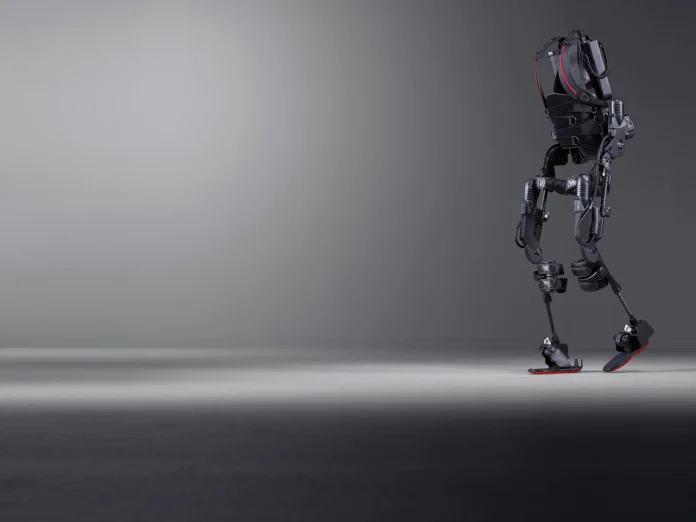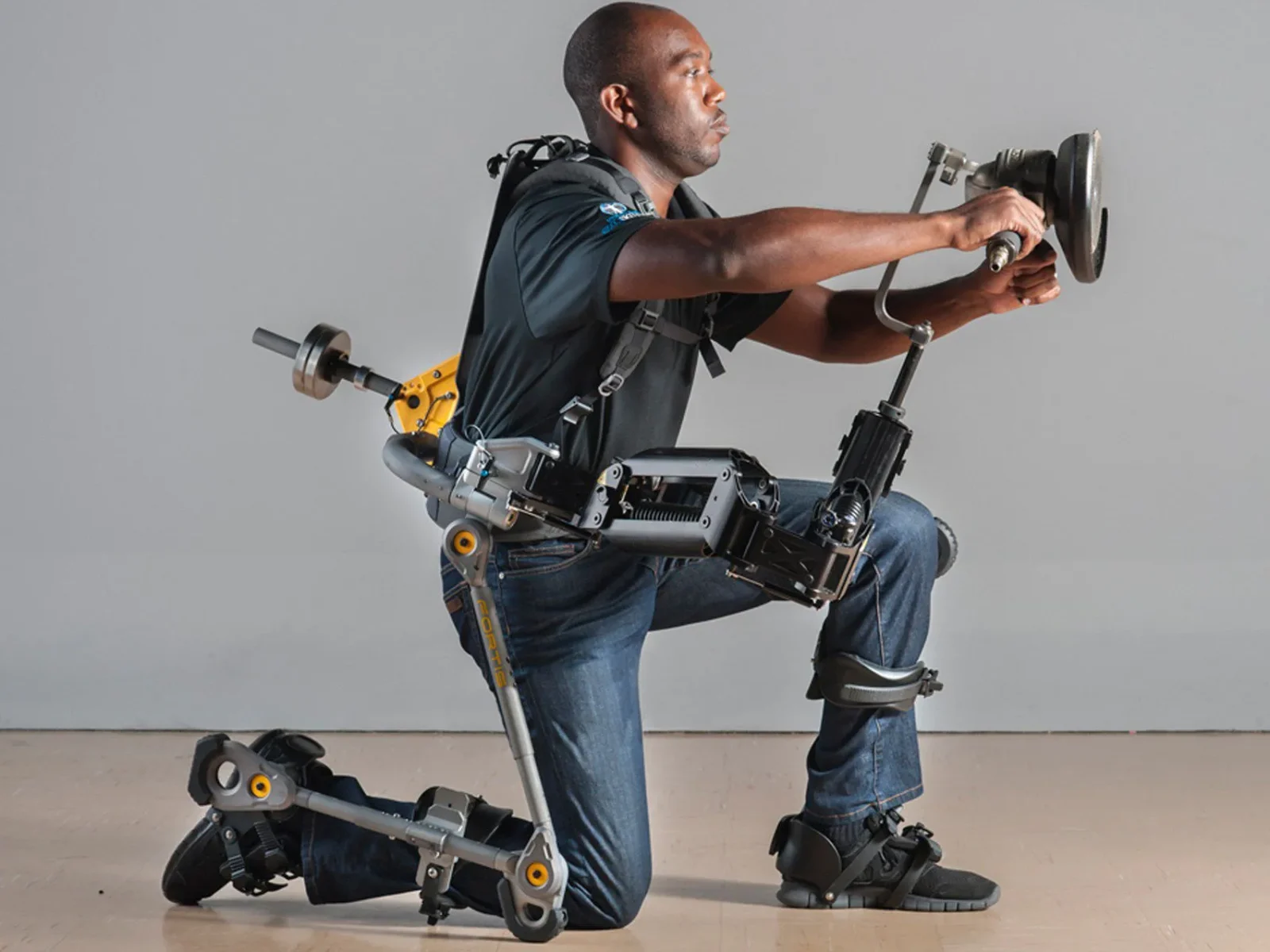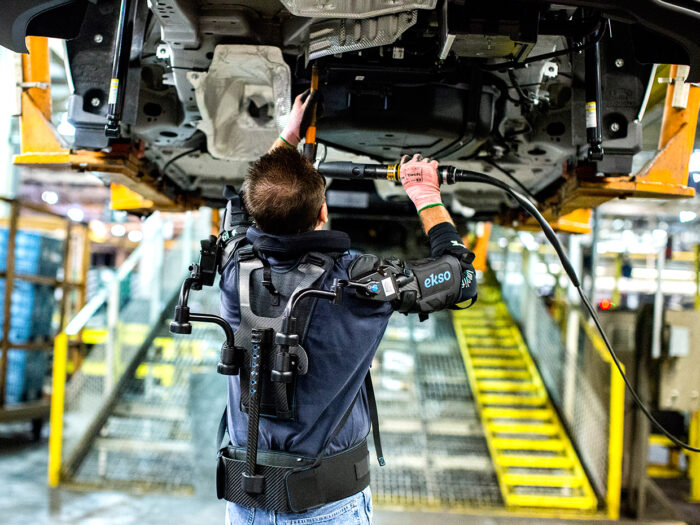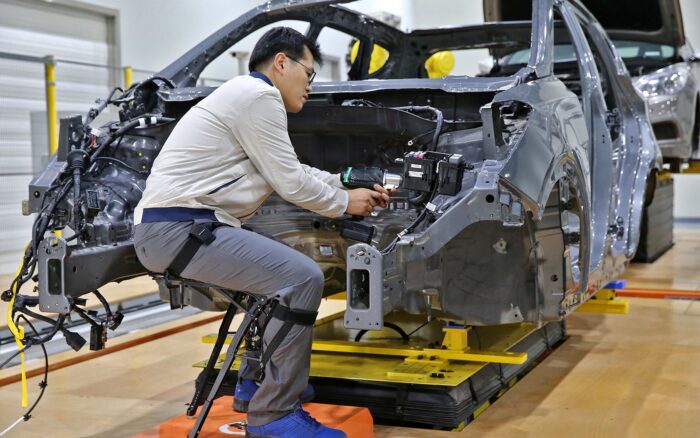
Not too long ago, the idea of wearing exoskeletons seemed like something out of a sci-fi movie and reserved for futuristic tales that tickle our imagination. But with innovation speeding ahead combined with the advent of globalization, exoskeletons have shifted from mere science fantasy to a tangible reality. They’re no longer confined to military or rehabilitation contexts but instead, they’re weaving into the very fabric of our everyday lives as they hold the potential to change how we live our lives and how we live in the fast-paced world.
Picture this: a world where walking is not just a mundane, involuntary act but an enhanced experience. A world where physical limitations are redefined and mobility takes on a new dimension. This is the world being sculpted by exoskeletons— the remarkable wearable machines meticulously crafted to amplify and support the human body. In this article, we will delve into the profound impact of exoskeletons on our daily life and unravel different possibilities that are already on the works as you read.
The Creation of Exoskeleton Technology
The history of exoskeletons started from the realms of science fiction to tangible reality. It was initially conceived in the late 19th century as a fantastical concept depicted in literature and film then transitioned to practical development during the mid-20th century with a focus on military applications, aiming to augment soldiers’ strength and endurance.
Despite early challenges related to weight and power supply, the late 20th century witnessed a shift towards medical applications, with exoskeletons emerging as rehabilitation tools to aid individuals with mobility impairments. The 2010s marked a pivotal era for exoskeleton development as commercialization took hold, expanding its scope to industrial settings and assistive devices for diverse user groups.
Today, ongoing technological advancements continue to propel exoskeletons into new frontiers, promising increased accessibility, versatility, and transformative impacts on both everyday life and specialized fields.
Enhancing Human Capabilities for Demanding Tasks

In the workforce, exoskeletons are valuable tools for industries with physically demanding tasks, mitigating strain and reducing the risk of injuries during heavy lifting and labor-intensive activities. This benefits brings forth a more efficient workforce due to the aid that it provides in terms of physical capabilities.
When it comes to the daily lifestyle, these devices redefine normal physical capabilities as it can aid those who are not physically capable of doing normal tasks without an assistance. Not only does it help them with mobility but uplifts those individuals’ morale by giving them a newfound sense of independence. Even in our recreation activities like hiking, cycling, and gaming benefit from exoskeletons through enhanced physical capabilities that elevates the overall experience.
When it comes to the issue of convenience due to its weight, developers are on the process of making it more ergonomic, lightweight, and adaptable, with integrated sensors for seamless user interaction and ease of use. Ultimately, exoskeletons are not just tools; they are catalysts for unlocking new possibilities as they extend to medical healthcare field like rehabilitation and emergency response.
Boosting Productivity and Efficiency in Manufacturing Industries
The seamless integration of exoskeletons into industrial workflows heralds a transformative era in boosting productivity and efficiency. Equipped with these advanced wearable devices, the workforce gains a competitive edge by executing tasks with heightened precision and speed.
The symbiotic relationship between human workers and exoskeletons optimizes the efficiency of manufacturing, logistics, and other industrial processes. Beyond immediate gains, the integration of exoskeletons reshapes the narrative of productivity, fostering a culture of continuous improvement and innovation within industrial settings. The workplace becomes a dynamic ecosystem where efficiency is not merely a metric but a foundational ethos that propels industries toward unprecedented operational excellence.
These transformations combined with palpable efficiency ensure trust among the workers who use it. That fundamental aspect is not a new discovery but rather a classic principle in sustaining trust among users, which can be observed from different aspects of businesses whether it is manufacturing or online services.
Take a look at how Domino’s expanded its accessibility and profitability through Domino’s Anywhere, which allowed people to order instantly- not just with mobile phones but even with an Alexa speaker. Even online casinos adapted to such by having sites like VegasSlotsOnline.com, which provides a variety of trusted online free slots, promos, and live deals as well as ensuring that users are managing their bankroll well and securely.
Expanding the Range of Human Capabilities in Disaster Management

In recent years, exoskeleton technology has been actively explored and tested for deployment in emergency situations, showcasing its potential to enhance the capabilities of emergency responders and improve overall disaster response efforts.
Exoskeletons’ versatility, strength, and durability can be especially useful in circumstances like as search and rescue missions, natural catastrophes, and hazardous settings. These trials signal a paradigm change in how technology might complement human talents in high-stakes circumstances.
It can assist troops in transporting heavy equipment, traversing difficult terrain, and navigating through debris during disaster response operations, thereby speeding up the search and rescue process and reducing the danger of more casualties. It allows rescuers to work efficiently in physically challenging situations.
Ethical Considerations and Societal Impact
The integration of exoskeletons prompts critical ethical considerations that serve as the moral compass guiding responsible implementation. Ensuring worker safety and well-being, addressing concerns related to potential job displacement, and actively fostering societal acceptance become imperative components of a responsible exoskeleton deployment strategy.
Furthermore, the establishment of retraining programs is pivotal, empowering the workforce to seamlessly adapt to the dynamic technological landscape. Ethical considerations surrounding exoskeleton use extend beyond immediate workplace concerns, reflecting a broader societal responsibility in navigating the ethical implications of integrating advanced technologies into our daily lives.
The societal impact of exoskeletons extends beyond individual workplaces, shaping the discourse on technology’s role in shaping our collective future.

Future Directions and Innovations
Looking ahead, the trajectory of exoskeleton technology points toward continuous innovation that transcends current boundaries. Advancements in design aesthetics, deeper integration with the nuances of human movement, and the tantalizing exploration of brain-computer interfaces for control purposes are at the forefront of this evolutionary journey.
Artificial intelligence-powered capabilities promise to further elevate these technological marvels, positioning them at the vanguard of reshaping human potential and the very essence of demanding tasks across a spectrum of industries. With the rapid rate of globalization, innovation is more prolific and its integration into the economy is a pragmatic benefit that is celebratory in and of itself.
Human augmentation in the industry is not just about technology being utilized for better efficiency but a gateway for exponential benefits and opportunities.
















